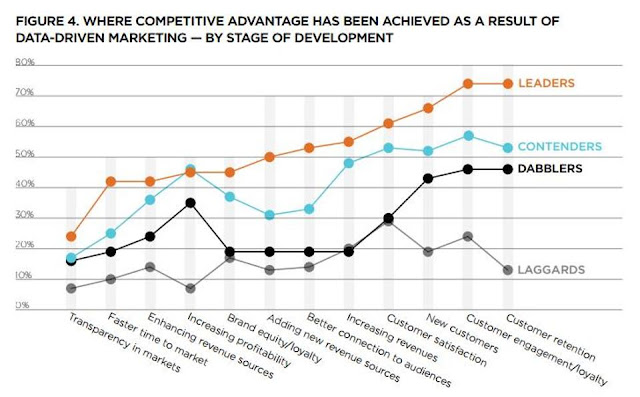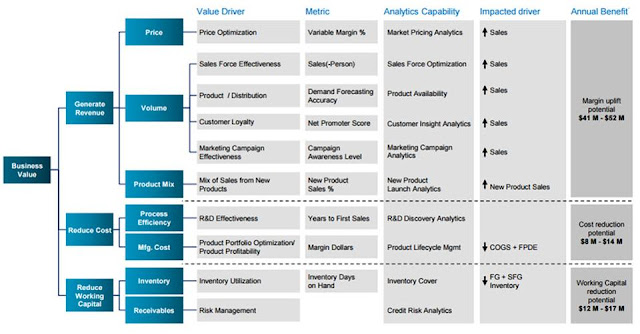With machine learning making disruptive innovation easier than ever before, it's up to entrepreneurs to show the big kids how it's done.
Vince Lynch
Machine learning is headed for a major growth spurt. After ticking past the $1 billion mark in 2016, the machine learning market is expected to hit $39.98 billion by 2025, according to a new report by Research and Markets.
Where will all that growth come from? Everywhere! Machine learning was born in 1959, coined by computer scientist Arthur Samuel -- but only recently has the larger business community come to understand its value. In the next few years, it will be adopted by everyone from Fortune 500 firms to mom-and-pop shops.
Of course, the first challenge of machine learning is identifying a use case. Not sure where to start? To make the most of this explosive technology, consider how today's top companies, ranging in industry from retail to hardware to media, are using it:
1. Target: Learn from the present to invest in the future.
Retail giant Target discovered that machine learning can be used to predict not only purchase behavior, but also pregnancy. In fact, Target's model is so precise that it can reliably guess which trimester a pregnant woman is in based on what she's bought. After a father discovered through Target's persistent promotions that his 16-year-old daughter was pregnant, Target actually had to dial its initiative back by mixing in less specific ads.
Most companies' promotions are driven by the seasons or holidays. Snow shovels go on sale in July, sunscreen in June. But consumers go through seasons in their own lives, too. The worst time to sell someone a car, for example, is right after she just bought one. It might be the best time, however, to market car insurance to that person. Machine learning can pick up on those rhythms, helping companies recommend their products to customers when the timing is just right.
My company has used machine learning to spur loyalty purchases. We discovered that if a customer is going through a life event (such as graduation or marriage), he is more likely to change his behavior than at other times in his life. An education company that knows 20 percent of its users leave every May, for example, might use machine learning to refer likely grads to a corporate partner or sponsor.
2. Twitter: Create the perfect preview.
When someone posts a photo to Twitter, she wants people to see it. But if the thumbnail is 90 percent floor or wall, nobody is going to click on it. Twitter seems to have solved this problem by using neural networks. In a scalable, cost-effective way, the social media firm is using machine learning to crop users' photos into compelling, low-resolution preview images. The result is fewer thumbnails of doorknobs and more of the funny signs just above them.
Give Twitter's thumbnail optimization a try for your next marketing campaign. Upload brand-aligned, user-generated photos, and let Twitter determine which elements of each image maximize engagement. Then, use the top-performing photo crops for your next Twitter campaign. Who doesn't love free market research?
We use machine learning to tweak images for conversational engagements. The challenge is making sure that rich images load quickly enough to keep up with a live conversation. A user who sends a question or search request expects a reply in the form of an image or GIF immediately. Using machine learning, we can deliver appropriate responses at scale in seconds.
3. Apple: Embrace ensemble experiences.
Anyone with more than one Apple product knows how well the devices play with one another. Now, the tech giant is using machine learning to create even more seamless customer experiences. Apple recently filed a patent that, in non-technical terms, implies that it's prioritizing cross-device personalization. In the near future, for example, a user's Apple Watch might suggest an iTunes playlist to match his heartbeat goal in another app.
At Cannes Lions 2017, we did something similar (though perhaps less patentable). We hooked our natural language processing system to Foursquare, Google Maps and local knowledge bases to help users navigate the tourist destination and conference. The result was a conversational experience that synthesized data from multiple sources to deliver quick answers.
Any company that works with smart devices, such as an Internet of Things startup, can do this. Connecting multiple models with the same set of training data improves the quality of insights delivered and, thus, the customer's experience. Devices hooked together as ensemble models cooperate like a baseball pitcher and catcher: Because they're working from the same data set, they're able to jointly decide how to approach a task from opposite sides.
4. Alibaba: Customize customer journeys.
A whopping 500 million people shop with Chinese retail giant Alibaba, more than the entire U.S. population. Each of those customers goes through a separate and distinct journey, from searching to buying. How does Alibaba track and tailor each of those 500 million journeys? With machine learning, of course.
Alibaba's AI should make every e-tailer jealous. Its virtual storefronts are customized for each shopper. Search results turn up ideal products. Ali Xiaomi, a conversational bot, handles most spoken and written customer service inquiries. Every element of Alibaba's business feels like it was built for the shopper engaging with it, and every action the shopper takes teaches the machine more about what the shopper wants.
5. Spotify: Deliver personalized media.
After acquiring two machine learning startups in 2017, Spotify, which I used to work with, is quietly testing out new features for its fan-favorite music recommendation service.
Last December, a Mashable writer noticed "like" and "don't like" buttons in her Discover Weekly feed. While Spotify has been tight-lipped about its intentions in acquiring video recommendation startup MightyTV in March 2017 and music personalization startup Niland just two months later, it likely did so to refine its AI stack and outsmart other music services.
Spotify's bet on Discover Weekly speaks to the premium music consumers place on personalization, made possible through its innovative use of machine learning. Even Spotify is surprised by Discover Weekly's success, which wasn't part of the music streaming company's offerings when it launched in 2007. Copycat services like Apple's New Music Mix quickly cropped up after Discover Weekly's 2015 debut, but they've struggled to surprise listeners with recommendations like Spotify's service does.
Of course, machines can't learn everything about a business or its customers. But companies like Apple, Spotify and Alibaba are pushing that boundary back further and further. Now, with machine learning making disruptive innovation easier than ever before, it's up to entrepreneurs to show the big kids how it's done.











